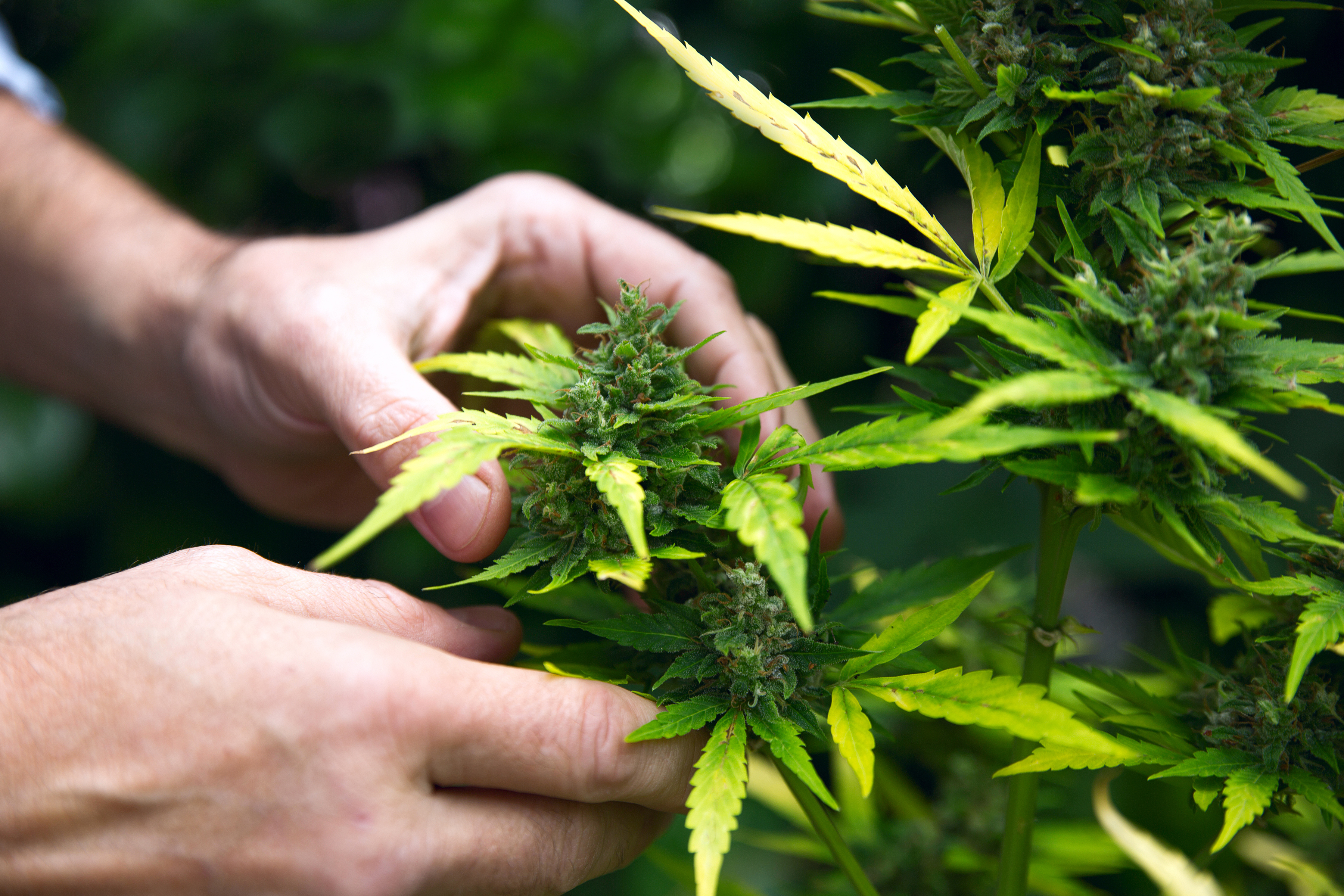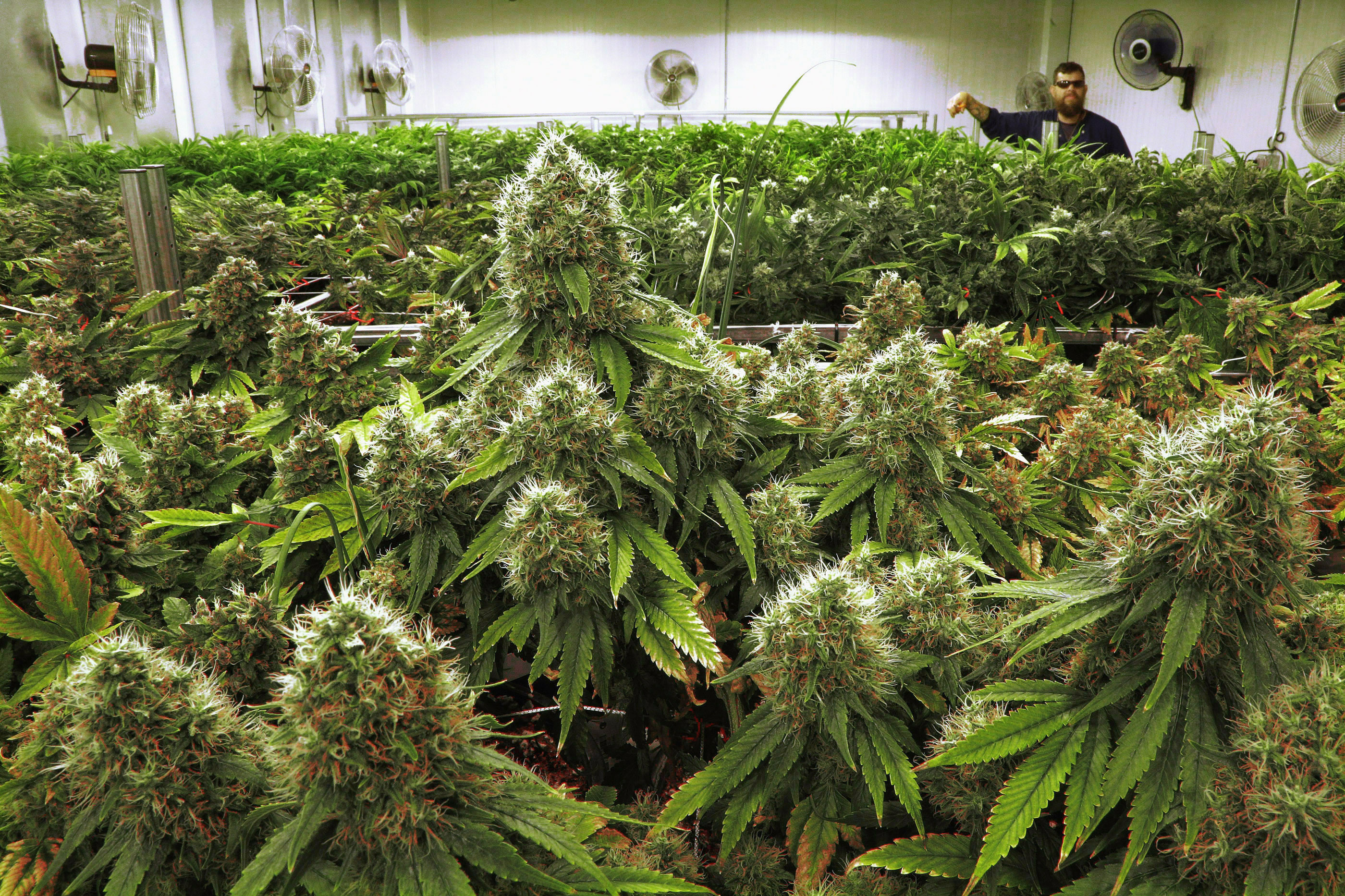
By Lesley Nickus and Nic Juarez
If you’re a fan of Malcolm Gladwell, the Canadian journalist and author with a knack for transforming data sets into insightful stories that challenge long-held tropes of human nature and psychology, you’ve no doubt heard of the latest saga that has his fans and critics taking to the Internet to comment on his Jan. 14, 2019, New Yorker piece, “Is Marijuana As Safe As We Think?”
It’s disappointing, to say the least, to see work from a highly respected writer littered with misinformation and debunked myths. In this era of information, Gladwell’s prose reads more like a modern day “Reefer Madness” than a caution against jumping on the cannabis bandwagon.
Oh FFS. Malcolm Gladwell once again uses a single source to incite fears unsupported by the body of research—this time about marijuana causing schizophrenia & violent crime, as he did with #autistic people & “thresholds of violence.” Do better, @NewYorker. https://t.co/1qkfAMJ3p9
— Shannon Des Roches Rosa (@shannonrosa) January 13, 2019
Didn’t expect my first time in print to be 1) in the @newyorker 2) in the mail section or 3) throwing shade at Malcolm Gladwell, but here we are. https://t.co/oZwqD9GMYM
— Rebecca McCray (@rebeccakmccray) January 14, 2019
instead of reading malcolm gladwell’s bullshit on marijuana legalization, read my sophomore year of undergrad paper trashing his dumb ass, non-sensical book Blink pic.twitter.com/96EaniJ4WT
— ˡᵛˡ ⁴⁵ STASIS POTUS (@thetomzone) January 8, 2019
Gladwell himself seemed confused by the backlash, much to the dismay of science journalist Dave Levitan.
I can’t get over how bad this tweet is. pic.twitter.com/WYTMXx9HpS
— Dave Levitan (@davelevitan) January 9, 2019
To gain further clarity on the scientific issues presented in the current cannabis conversation, we consulted Weedmaps adviser Dr. Adie Wilson-Poe, who has a Ph.D. in neuroscience and has extensively studied how cannabinoids interact with the human body. While there are many points where we disagree with Gladwell’s approach and conclusions, we would be remiss if we denied the opportunity to discuss in more detail those points on which we align.
The Problem With Gladwell’s Piece
Gladwell extensively quotes and relies on information presented in Alex Berenson’s book “Tell Your Children: The Truth About Marijuana, Mental Illness, and Violence.” While Berenson’s research into the effects of cannabis legalization and his credentials as an investigative reporter are noteworthy, Berenson is neither a medical researcher nor qualified to present a scientific hypothesis with conclusions to be taken as fact. His book contains mostly conjecture presented with a distinct bias that Berenson himself identifies in the opening narrative.
Malcolm Gladwell, discussing his “Outliers: The Story of Success” in 2009 in Houston, wrote an article in the New Yorker warning that marijuana use is more harmful than we think. (Photo by Ed Schipul via Flickr; used with a Creative Commons Attribution-Share Alike-2.0 Generic license)
“Berenson’s not accumulating evidence, he is making a flashy argument,” said Dr. Wilson-Poe. “ … The point of making an argument is to exclude or discount certain facts, in order to support your idea, which is exactly what he has done. … He’s gathering anecdotal reports and making a conjecture. … A totally different thing than hypothesis generation.”
Wilson-Poe went on to explain that a proper hypothesis and accumulation of evidence must take into account all pieces of data, including those that conflict or have nuance. Berenson’s book does not look into the preponderance of evidence and is not presenting a true scientific hypothesis.
While Berenson leaned on his capacity to write thrillers by stoking fears of psychosis and violence, The National Academies of Science, Medicine, and Engineering conducted their own exhaustive review in 2017 of the available literature, published in “The Health Effects of Cannabis and Cannabinoids: The Current State of Evidence and Recommendations for Research.” The 16-person committee of experts drew much more conservative conclusions, citing the “multidirectional and complex” association between cannabis use and psychosis.
Malcolm Gladwell is the author of “Outliers: The Story of Success,” “What the Dog Saw and Other Adventures,” and “Blink: The Power of Thinking Without Thinking.” (Photo by Adam Levine via Flickr; used with a Creative Commons Attribution 2.0 Generic license)
For Gladwell’s part, aside from heavily quoting a source who has not spent a considerable amount of time investigating how cannabis interacts with the neurological pathways in the brain, he misrepresented statistics, used straw man arguments, and failed to provide critical context for many of the cited studies.
For example, Gladwell cites Benson’s exploration of early results from Washington that showed the rate of aggravated assault rose 17 percent between 2013 and 2017 while the murder rate rose 44 percent. The state legalized recreational cannabis in 2014. He continues to explain Berenson’s speculation that cannabis legalization had something to do with the increase in figures.
Herein lies one of many problems: correlation does not equal causation. The simple fact that statistics rose during a period following cannabis legalization does not mean legalization caused the rise in cases. This is a common logical fallacy that data reported in a September 2017 Seattle Times directly conflicts. In their examination of the numbers, reporters found murders in the Puget Sound region decreased in 2016. If cannabis were the cause of an increase in violent crime, those patterns would be displayed in crime statistics across the state where cannabis sales were prevalent. That is not the case.
Malcolm Gladwell, right, joined by Philip Kerr a the 2014 PEN America Literary Gala, believes marijuana is more harmful than its consumers think. (Photo by Aslan Habib Chalom for PEN America Center via Wikimedia Commons; used with a Creative Commons Attribution 2.0-Generic license)
Elsewhere, Gladwell chooses to point to studies that support Berenson’s hypothesis and leave out studies that don’t. In the New Yorker article, Gladwell references two studies of identical twins that both showed that when one of the twins used cannabis before age 17, they were several times more likely to develop an addiction to opioids. But as Levitan pointed out in the middle of a Twitter thread, other research had questioned the twins study and Susan Weiss of the National Institute of Drug Abuse (NIDA) explained to Levitan that there are several ways in which the studies “could be misinterpreted or misleading.” None of which was mentioned by Gladwell.
As a journalist, Gladwell could have chosen to dig further into Berenson’s work to see if it held up to scrutiny, as German Lopez, Vox.com’s senior correspondent, did when he reached out to one of Berenson’s sources, historian Isaac Campos, to find out that Berenson “pretty badly misrepresented” Campos’ work. Instead, Gladwell repeated much of Berenson’s words and theories, seemingly doing little outside research of his own.
Also, my god Gladwell! Read the goddamn study! He clearly just read Berenson’s work and did no actual research of his own. Below are Gladwell version, Berenson version, and the study’s ACTUAL hypothesis. “Not associated” is NOT THE SAME THING as “predict the opposite”! pic.twitter.com/1JeNQ36bVq
— Dave Levitan (@davelevitan) January 8, 2019
It should be noted that Gladwell has been accused of being in the pocket of Big Tobacco by journalists Mark Ames and Yasha Levine in 2011, but Gladwell has adamantly denied these allegations and stated that “I’ve never smoked. No one in my family smokes. I hate smoking. (I’m a runner, for goodness sake.)” to the Huffington Post in 2015.
But there are a few areas where he raises important questions the cannabis community needs to examine.
The Points That Hold Up
There are three key points on which we agree with Gladwell: 1) we need more research to draw meaningful medical conclusions about the value and risks of cannabis, 2) there is a legitimate concern for the potency of modern cannabis products, and 3) adolescents are particularly susceptible to issues arising from cannabis use.
Malcolm Gladwell, shown in 2011 at the Creativity World Forum, has raised concerns about the potency of modern cannabis products and their effects on the still-developing minds of youths. (Photo by Thomas Bonte via Flickr; used with a Creative Commons Attribution 2.0-Generic license)
We Need More Cannabis Research
One point on which we can all agree is that we need more research to draw definitive conclusions about how cannabis interacts with our bodies and how it might hold value in addressing a number of medical conditions.
The rub is that access to research money is significantly limited as a result of cannabis’ designation as a Schedule I substance, meaning it is regarded as having a high potential for abuse and no therapeutic value. In the absence of public investment in research on cannabis’ medical capabilities, private businesses have stepped up to fill in the gap, but it’s not enough. Even when they are able to get their hands on private money for cannabis research, researchers must jump through substantial, unnecessary hoops or conduct research using cannabis that is nothing like that available in the consumer marketplace.
In December 2018 during the Police Assisted Addiction and Recovery Initiative (PAARI) National Law Enforcement Summit in Boston, U.S. Surgeon General Jerome Adams called on the federal government to reconsider its classification of cannabis, citing the need for expanding research into the effects of cannabinoids.
And Adams isn’t the only one calling for research: politicians, advocacy groups and the medical community at large have asked for more research as states continue to legalize and regulate cannabis.
Cannabis is More Potent Nowadays
There is simply no denying that cannabis is more potent than it used to be. With more and more product types popping up regularly, such as concentrates and topicals, consumer demand is eclipsing the research community’s capacity to verify many of the claims being made about the products people are buying.
One study found that in the European Union, the THC concentrations in cannabis doubled from 2006 to 2016. Another study revealed that while THC content is becoming more potent, production of other cannabinoids is not following suit, leading to a product that is not the same today as it was decades ago. And the average THC content of concentrates is even higher than that of flower — nearly three times on average, a 2017 study of Washington’s cannabis market found.
The high potency of modern cannabis products has been explored for its role in an increase in cases of cannabis use disorder, but the available research merely points out a correlation. The link between potent cannabis products and psychosis is equally vague, however there does appear to be a dose-dependent link between cannabis use and psychosis — greater risk with greater consumption. A 2016 meta-analysis and 2017 literature review confirmed a link, but further research is necessary to determine a cause-and-effect relationship.
Malcolm Gladwell, shown in 2008 at the Up Experience, is experience a backlash from the cannabis community over his claims of the harmful effects of marijuana. (Photo by Ed Schipul via Wikimedia Commons; used with a Creative Commons Attribution 2.0-Generic license)
“Undeniably, we know that there is something going on between cannabis and psychosis. But that’s as far as the most well-respected experts in the field are willing to go,” Wilson-Poe said. “We know there is an association. What that association is, we have no idea. We do know that if you already have a vulnerability for psychosis then cannabis can potentially make that worse.”
One potent form of cannabis currently gaining popularity in the consumer market, concentrates, have come under specific scrutiny in recent years. The authors of a 2017 study concluded that “the difficulty users find in controlling the nail temperature put users at risk of exposing themselves to not only methacrolein but also benzene.” Current dabbing practices make it difficult to control the temperature of the nail, potentially leading to someone dabbing at a temperature high enough to cause cancer-causing compounds to form.
The answer to these risks isn’t to admonish the concentrate culture, but to conduct more research to educate consumers about the risks and benefits of their chosen products and methods of consumption.
Adolescents Are Susceptible, But Cannabis is Not a ‘Gateway’
The central argument of Berenson’s book — and Gladwell’s discussion of it — is that cannabis causes psychotic, violent behavior. This is not the first time we have seen cannabis portrayed as a gateway to subsequent maladaptive behavior; it has also been vilified as the gateway to abusing more dangerous drugs.
Research has shown a correlation between the use of cannabis and the use of other drugs. But this correlation is also true for other commonly abused substances. Nobel Laureate Eric Kandel explored the gateway hypothesis in 2015 and concluded that nicotine provides the gateway through which harder drugs may enter later in life. A 2012 study of 12th-graders revealed that students who used alcohol were more likely to experiment with other substances. However, other studies conducted by the University of Washington suggest that these correlations are just that; there is no causal relationship between cannabis and the abuse of other drugs.
But just because the gateway drug theory isn’t real doesn’t mean there aren’t risks associated with cannabis use in adolescence. The majority of scientific evidence highlighting the risks of cannabis demonstrates that the impact is greatest in youths who engage in heavy cannabis use at an age where their brains are still developing.
Malcolm Gladwell speaks about “capitalization” of human potential within different regions and cultures at Pop!Tech 2008. Photo by Kris Krüg via Flickr Creative Commons 2.0.
“A lot of the negative effects we see with chronic cannabis use are not necessarily because a person used cannabis daily or chronically, but because they started using cannabis chronically as a person with a growing brain,” Wilson-Poe said. “A number of psychosocial and mental health outcomes are worse for kids who use cannabis, compared to their peers.”
It is important to note that current research has not been able to establish a link between cannabis legalization and an increase in adolescent use. In fact, the opposite has shown to be true. In states where cannabis is regulated, youth usage rates have dropped.
This points to a long held argument of the reform movement: legalization and proper regulation will keep marijuana out of kids’ hands.
Why The Conversation Is Important
People are demanding an evolving suite of cannabis products to help treat ailments when most other remedies have failed to adequately mitigate their symptoms. The medical community is limited in its ability to quickly search for and find answers to many of these problems as a result of cannabis’ Schedule I designation within the Controlled Substances Act.
While Gladwell and Benson may be frustrated by the lack of research, imagine the frustration on the part of Wilson-Poe and other qualified researchers like her who have been eagerly awaiting the funding needed to answer these important questions. This is a prime opportunity for those interested in this ongoing saga to do their part in reducing research barriers and allowing scientists to do their jobs.















